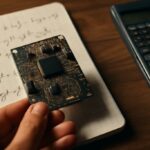
Hidden patterns unlock a universe of hyperfields
Imagine a world where numbers don’t just add up, but *spread out* into sets. This isn’t some mathematical fantasy; it’s the realm of hyperfields, exotic structures that are quietly revolutionizing fields like algebraic geometry and matroid theory. Recently, a remarkable discovery has been made about these hyperfields, shedding light on their hidden order and potentially…
























